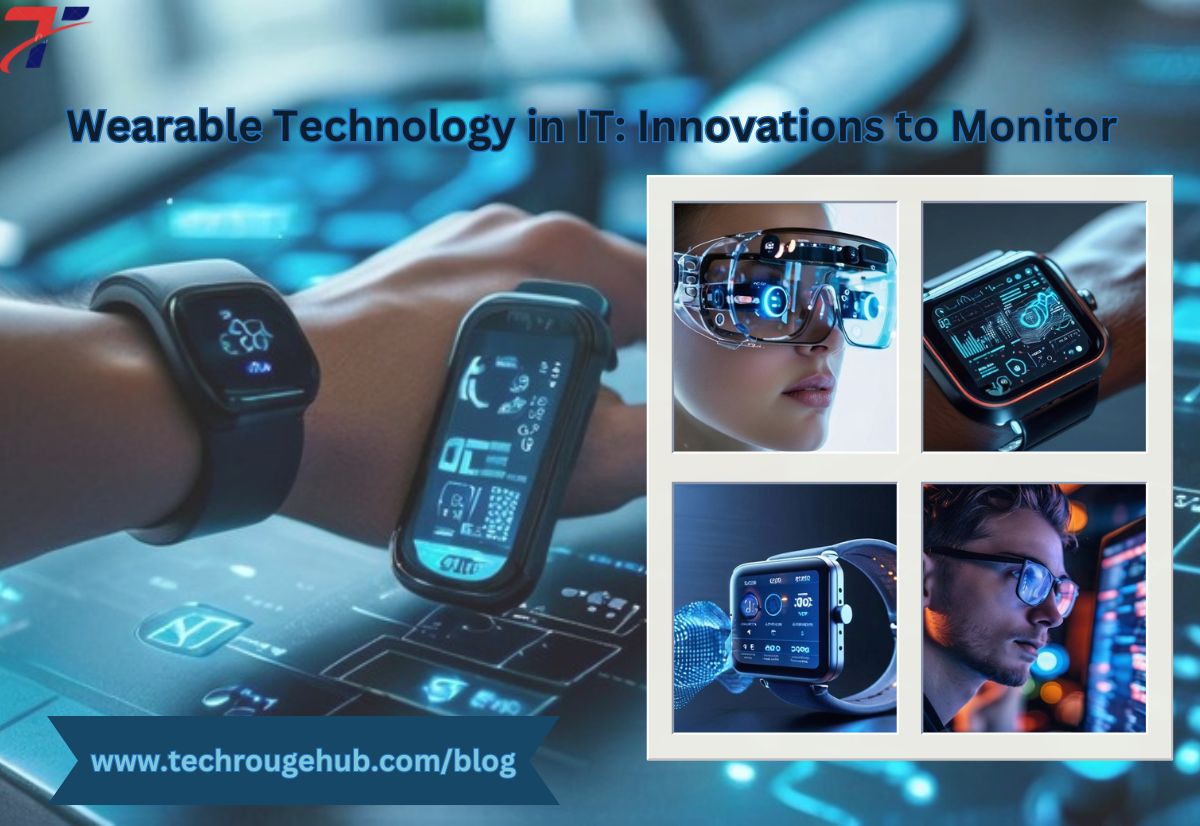In the fast-moving tech landscape, wearable devices stand out as a groundbreaking trend that is transforming various sectors. Spanning healthcare, fitness, communication, and entertainment, wearable technology continuously redefines possibilities with each new iteration. These advancements not only enhance everyday convenience but also provide innovative solutions to pressing challenges. Here’s an overview of some of the most notable wearable tech innovations to keep an eye on.
1. Smartwatches Evolving Beyond Fitness

Smartwatches have progressed significantly from simple fitness trackers. The newest models come equipped with sophisticated capabilities like ECG monitoring, blood oxygen tracking, and sleep analysis. They are becoming essential health devices, particularly for the early identification of heart problems and other serious health issues. Additionally, their compatibility with IoT systems allows for smart home control, transforming these gadgets into versatile tools worn on your wrist.
2. Smart Glasses: Augmented Viewing

Gaining traction, smart glasses represent another compelling innovation. With augmented reality (AR) as a key feature, these glasses enable users to superimpose digital data onto their real-world surroundings. From aiding in navigation to assisting professionals in fields like healthcare and construction, and enhancing entertainment experiences, smart glasses are proving to be far more than mere futuristic novelties. Their hands-free functionality enhances practicality across various sectors.
3. Continuous Monitoring with Wearable Health Devices

Wearable health technology is revolutionizing the medical field. Devices that track vital signs in real-time, including glucose levels, blood pressure, and heart rate, are becoming increasingly accurate and accessible. These wearables can alert healthcare providers to irregularities, facilitating faster responses. The capability of these devices in preventative healthcare is substantial, enabling individuals to keep continuous tabs on their health, thereby diminishing hospital visits and improving overall outcomes.
4. Smart Clothing: A Breakthrough

Revolutionizing wearable technology, smart clothing integrates sensors that monitor body temperature, movement, and posture. For athletes, this apparel provides instant performance data that can refine training programs. In the realm of healthcare, smart clothing aids in rehabilitation by tracking muscle activity and motion, ensuring patients execute exercises correctly. The array of potential uses for smart clothing is immense, and its market presence is likely to rise.
5. Rise of Wearable Payment Solutions
Wearable payment technologies are gaining prominence as consumers increasingly seek contactless payment options. Items such as smart rings, bands, and bracelets equipped for payments are becoming popular due to their convenience. These devices remove the necessity of carrying cards or phones for transactions, providing a safer, quicker method for making purchases. With advancements in security, broader acceptance of these wearables is on the horizon.
6. Brain-Computer Interfaces (BCI)

One of the most thrilling advancements in wearable tech is the emergence of Brain-Computer Interfaces (BCIs). Although still in nascent stages, BCI technology enables users to control devices with their thoughts, potentially changing the landscape of human-device interaction, especially for individuals with disabilities. Imagine navigating a computer or smartphone solely through thought! As this tech evolves, its impact on human-machine engagement could be enormous.
7. Flexible and Stretchable Electronics
The upcoming wave of wearables features flexible and stretchable electronics that adapt to body contours. Such devices provide enhanced comfort and usability over traditional rigid wearables. Stretchable batteries and sensors can be seamlessly integrated into clothing or wearable skins, rendering them less intrusive and more suitable for prolonged use. This innovation paves the way for new applications in medical monitoring as well as consumer electronics.
8. Monitoring Mental Health with Wearables
Wearable tech is increasingly addressing mental health concerns. New devices can assess stress levels, emotional states, and even provide guided breathing exercises to assist users in managing anxiety and depression. By evaluating physiological indicators like heart rate variability and sleep patterns, these wearables offer valuable insights into mental well-being and can prompt interventions before issues escalate.
Conclusion
As wearable technology rapidly advances, it offers solutions that enhance our health, enrich our daily experiences, and transform our interactions with the environment. From smartwatches and health monitors to intelligent clothing and brain-computer interfaces, the possibilities for wearables are immense. With ongoing innovations, they are poised to play an even larger role in shaping the technological landscape and society’s future.

